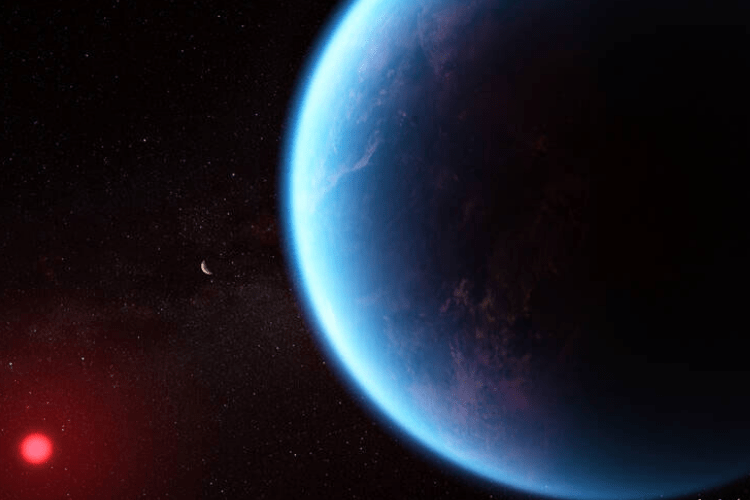Could this exoplanet be inhabited?
While the James Webb Space Telescope observed the atmosphere of an alien world 120 light-years away, it picked up hints of a substance only made by living things — at least, that is, on Earth.
This molecule, known as dimethyl sulfide, is primarily produced by phytoplankton, microscopic plant-like organisms in salty seas as well as freshwater.
The detection by Webb, a powerful infrared telescope in space run by NASA and the European and Canadian space agencies, is part of a new investigation into K2-18 b, an exoplanet almost nine times Earth’s mass in the constellation Leo. The study also found an abundance of carbon-bearing molecules, such as methane and carbon dioxide. This discovery bolsters previous work suggesting the distant world has a hydrogen-rich atmosphere hanging over an ocean.
Such planets believed to exist in the universe are called Hycean, combining the words “hydrogen” and “ocean.”
“This (dimethyl sulfide) molecule is unique to life on Earth: There is no other way this molecule is produced on Earth,” said astronomer Nikku Madhusudhan in a University of Cambridge video. “So it has been predicted to be a very good biosignature in exoplanets and habitable exoplanets, including Hycean worlds.”
But hold your horses.
Scientists involved in the research caution that the evidence supporting the presence of dimethyl sulfide — DMS, for short — is tenuous and “requires further validation,” according to a Space Telescope Science Institute statement. Follow-up Webb observations should be able to confirm it, said Madhusudhan, the lead author on the research, which will be published in The Astrophysical Journal Letters.
Researchers use Webb to conduct atmospheric studies of exoplanets. Discoveries of water and methane, for example — important ingredients for life as we know it — could be signs of potential habitability or biological activity.
The method this team employed is called transmission spectroscopy. When planets cross in front of their host star, starlight is filtered through their atmospheres. Molecules within the atmosphere absorb certain light wavelengths, or colors, so by splitting the star’s light into its basic parts — a rainbow — astronomers can detect which light segments are missing to discern the molecular makeup of an atmosphere.
Madhusudhan said this study marks the first time exoplanet hunters have ever found methane and hydrocarbons. That, coupled with the absence of molecules like ammonia and carbon monoxide, is an intriguing cocktail for an atmosphere.
“Of all the possible ways to explain it, the most plausible way is that there is an ocean underneath,” he said.
K2-18 b orbits a cool dwarf star in its so-called “habitable zone,” the region around a host star where it’s not too hot or cold for liquid water to exist on the surface of a planet. In our solar system, that sweet spot encompasses Venus, Earth, and Mars.
Although K2-18 b lies in the Goldilocks space, that fact alone doesn’t mean the planet can support life. The researchers don’t know what the temperature of the water would be, so whether it’s habitable remains a mystery.
“But it’s got all the indications of being so,” said Madhusudhan. “We need more observations to establish that more firmly.”
This article was here published in Mashable:

